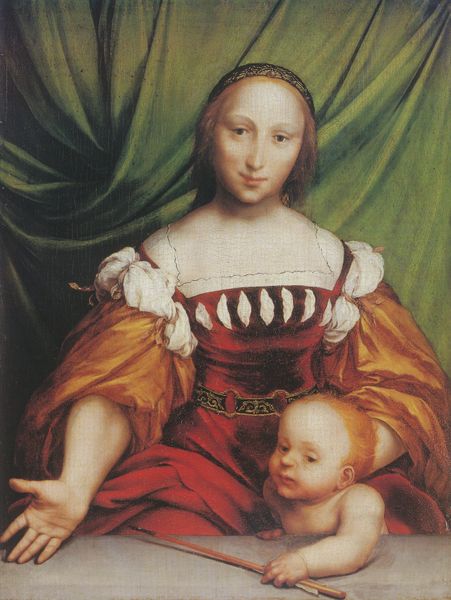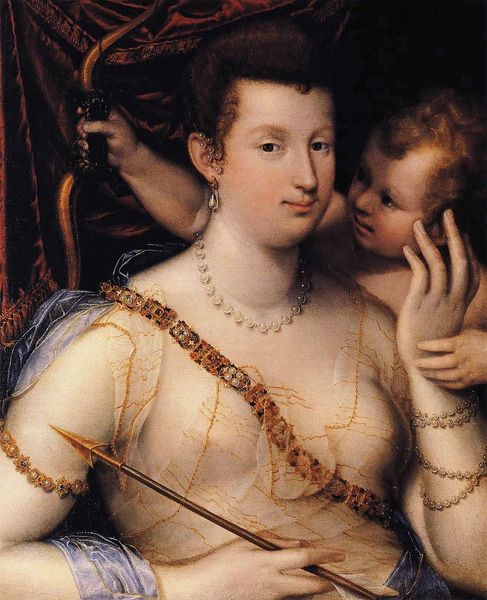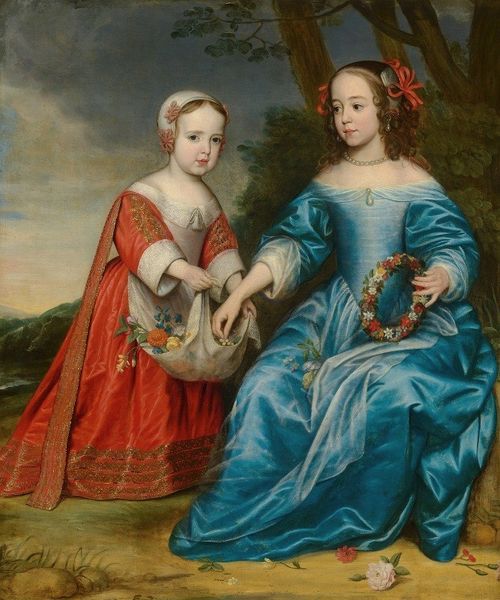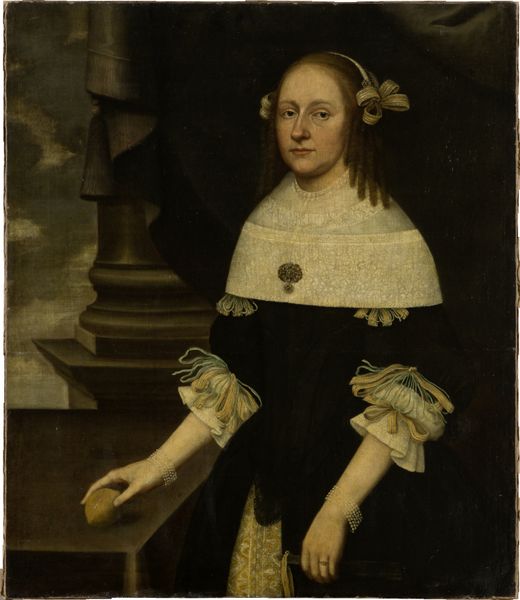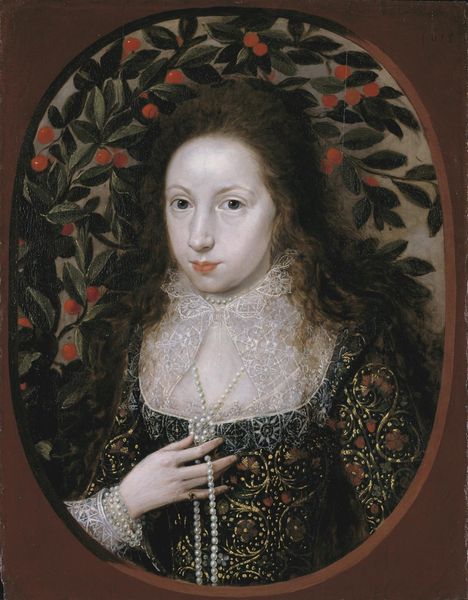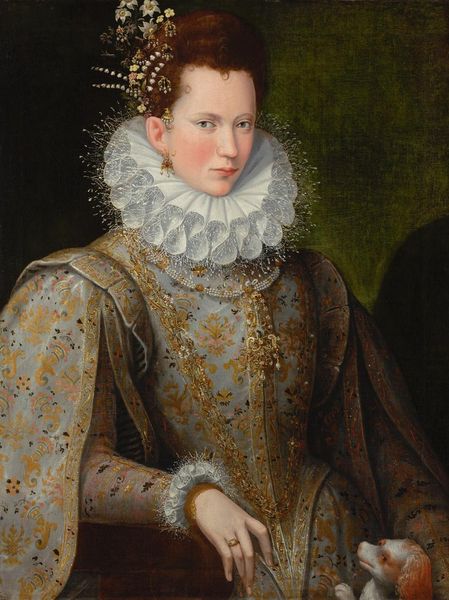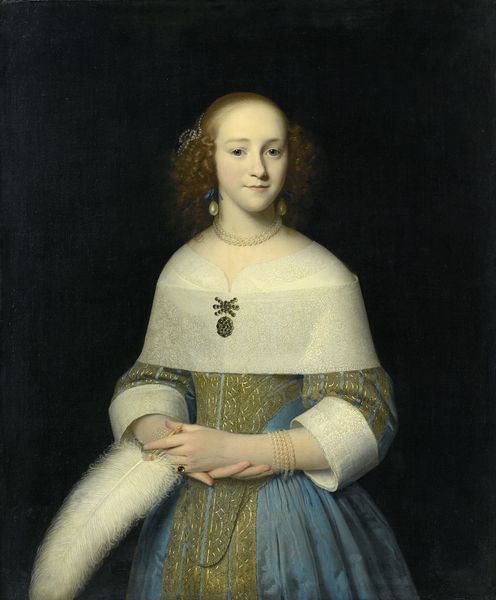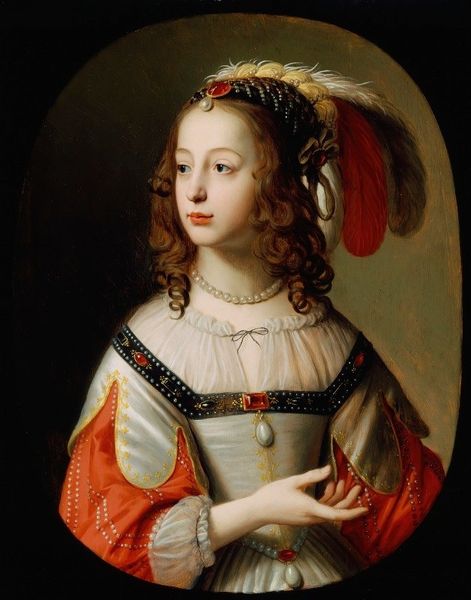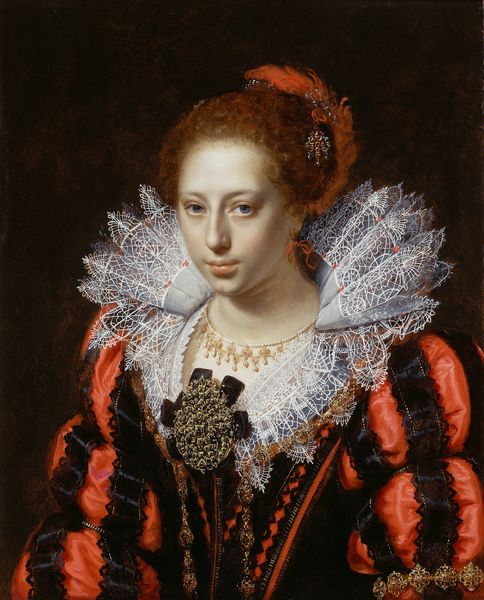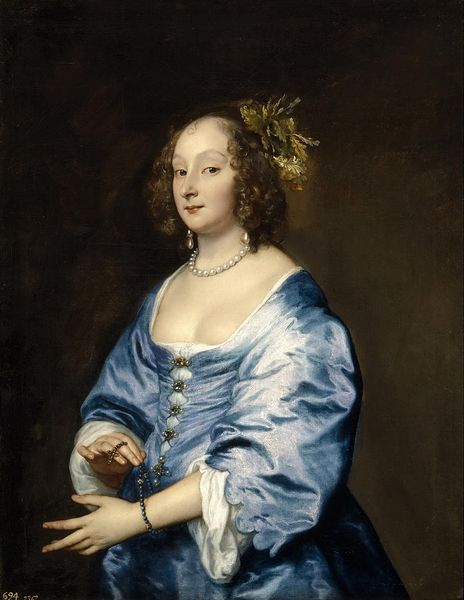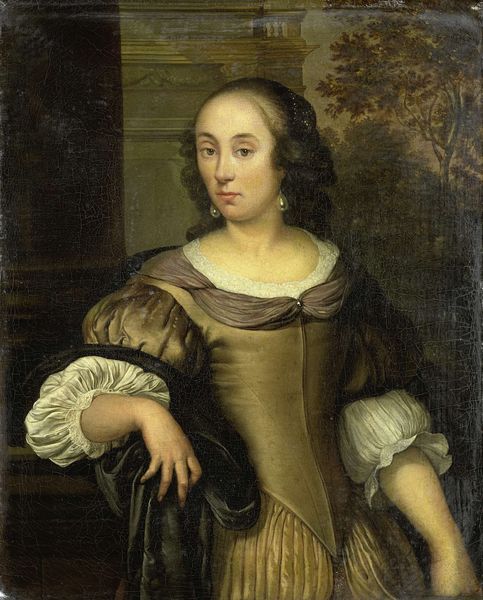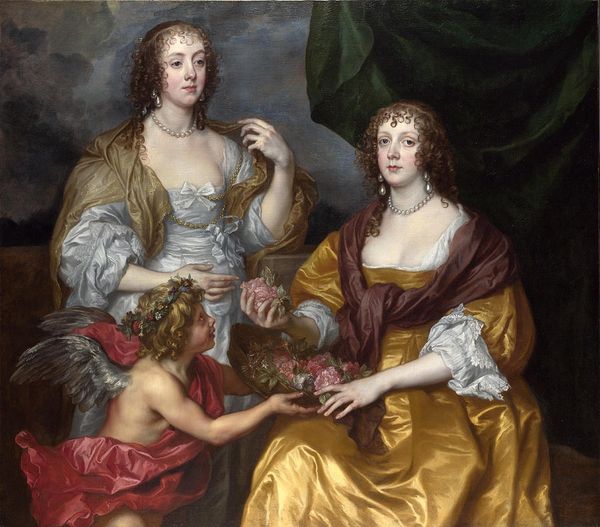
Dimensions: support: 742 x 608 mm
Copyright: CC-BY-NC-ND 4.0 DEED, Photo: Tate
Editor: Gilbert Jackson's painting, "A Lady of the Grenville Family and her Son," captures a moment of serene formality. The lady's gaze is direct, and the inclusion of the child softens the composition. What stories do you think are embedded within this portrait? Curator: The pearls, the flowers in her hair, these are not merely decorative. Pearls often symbolized purity and wealth, while flowers, particularly in portraiture, could represent ephemeral beauty and the cycle of life. Do you see how this resonates with the child's presence? Editor: I hadn't thought about that! So the flowers aren't just pretty; they're a reminder of mortality. Curator: Precisely. And consider the familial line, the continuation of legacy signified in the gaze of the child. This painting is not just a record of appearance, but of aspiration and memory. Editor: That gives me a lot to think about. It's amazing how much can be conveyed through such subtle symbolism.
Comments
tate 7 months ago
⋮
http://www.tate.org.uk/art/artworks/jackson-a-lady-of-the-grenville-family-and-her-son-t03237
Join the conversation
Join millions of artists and users on Artera today and experience the ultimate creative platform.
tate 7 months ago
⋮
This lady may be a member of the Grenville family of Wootton Underwood, Buckinghamshire; possibly Anne Grenville, who was born around 1617 and died when she was twenty-nine, in 1646. She is shown with a bunch of tulips pinned in her hair. Tulips were a fashionable, highly prized and expensive commodity, recently introduced from Holland where they had been the subject of huge financial speculation. The painter Gilbert Jackson was based in London, though he seems to have worked all over Britain, painting academics and, as here, country gentry. Gallery label, September 2004
